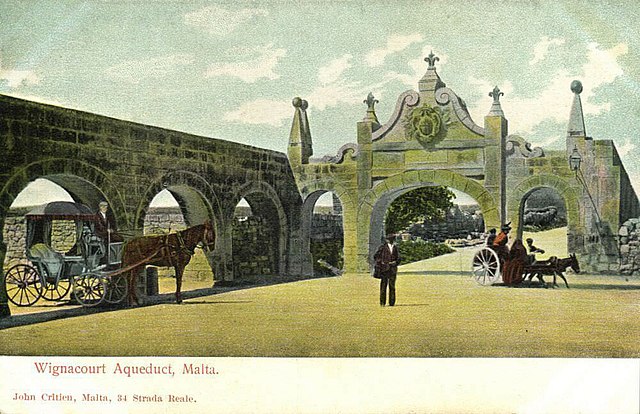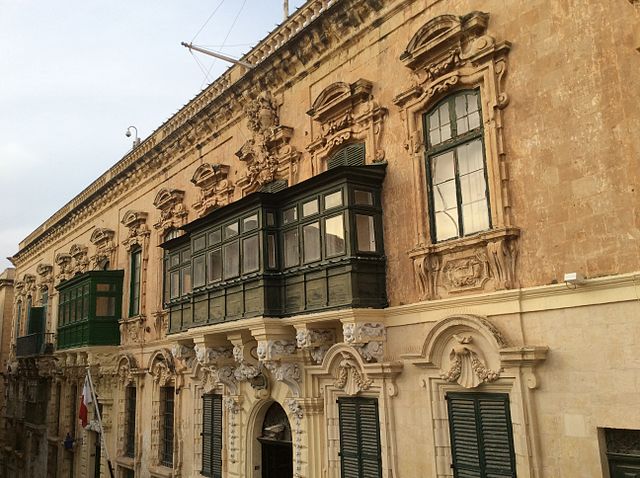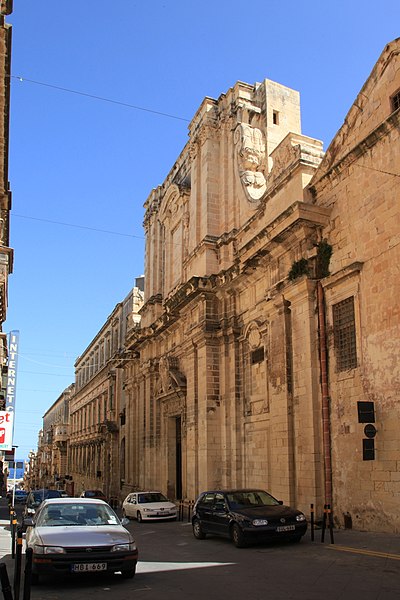Maltese Baroque architecture
Maltese Baroque architecture is the form of Baroque architecture that developed in Malta during the 17th and 18th centuries, when the islands were under the rule of the Order of St. John. The Baroque style was introduced in Malta in the early 17th century, possibly by the Bolognese engineer Bontadino de Bontadini during the construction of the Wignacourt Aqueduct. The style became popular in the mid to late 17th century, and it reached its peak during the 18th century, when monumental Baroque structures such as Auberge de Castille were constructed.
Auberge de Castille, designed by Andrea Belli in 1741–45
Auberge d'Italie, originally designed by Girolamo Cassar in the Mannerist style but later redecorated in the Baroque style
The Wignacourt Arch, built in 1615 by Bontadino de Bontadini
Hostel de Verdelin, a mid-17th century example of Spanish Baroque architecture in Malta
Francesco Buonamici (architect)
Francesco Buonamici (1596–1677) was an Italian Baroque architect, painter and engraver who was active in Lucca, Malta, Sicily and Rome during the 17th century. He played a significant role in the introduction of Baroque in Malta.
Church of the Suffragio, Lucca
House in Valletta where Buonamici lived in during his stay in Malta
Church of the Jesuits, Valletta
Church of St Paul, Rabat








